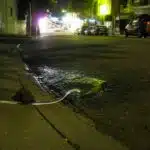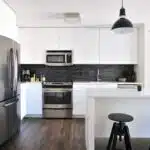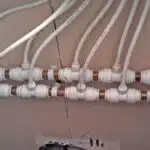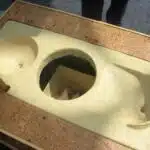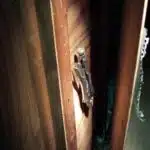As a plumbing expert, it is important to understand that common plumbing problems can occur at any time and can cause inconvenience and discomfort. These problems can range from minor leaks to major pipe bursts, and can occur in both residential and commercial properties. It is crucial for homeowners and business owners alike to have a basic understanding of these common issues and the steps they can take to address them.
In this article, we will discuss some of the most common plumbing problems that homeowners and business owners may encounter, as well as provide practical solutions for fixing them. Whether you are dealing with a clogged drain or a burst pipe, our aim is to offer guidance on how to address these issues in a safe, effective manner. By empowering our readers with this knowledge, we hope to help them save time, money, and stress when it comes to resolving their plumbing woes.
Leaky Faucets
Faucets come in a variety of types, but all can suffer from leaks. The most common types are compression faucets, ball faucets, cartridge faucets, and ceramic disk faucets. Identifying the type of faucet is essential when fixing a leak. Compression faucets have washers that need replacement; ball faucets have many parts that can wear out or become misaligned; cartridge faucets require a new O-ring or cartridge; ceramic disk faucets typically need a new inlet and outlet seals.
When fixing a leaky faucet, having the right tools is crucial to ensure success. A few essential tools include slip-joint pliers, adjustable wrenches, Allen wrenches, needle-nose pliers, and screwdrivers. In some cases, specialized tools may be necessary to remove specific parts or reach deep into the faucet. It’s best to gather all tools before starting any repairs to avoid prolonging the job.
Fixing a leaky faucet is not only important for saving money on water bills but also for conserving water resources. It’s also an excellent way to hone one’s DIY skills and gain confidence in handling simple plumbing problems. Next up: clogged drains – another common plumbing issue that homeowners face regularly.
Clogged Drains
Clogged drains are a common plumbing problem that can occur in any household. They can be caused by a variety of factors such as food waste, hair, soap scum, and grease buildup. When clogs occur, water will start to back up in the sink or shower drain, causing an unpleasant odor and possibly even flooding.
Fortunately, there are preventative measures you can take to avoid clogs from forming. For example, using a drain screen in your sink or shower will prevent hair and other debris from going down the drain. Additionally, avoid pouring grease down the drain as it can solidify and cause a blockage. Finally, running hot water for a few minutes after each use of the sink or shower can help prevent build-up.
If you do end up with a clogged drain, there are several DIY solutions that may work before calling in a professional plumber. One effective method is to pour boiling water down the drain to break up any soap scum or grease build-up. Another option is to use a mixture of baking soda and vinegar followed by hot water. Alternatively, using a plunger on the affected drain may dislodge the blockage.
Next up: Running Toilets…
Running Toilets
A running toilet is one of the most irritating plumbing problems that homeowners face. Not only does it waste valuable water resources, but it also causes a constant noise that can be very annoying. While it may seem like a minor issue, ignoring a running toilet can lead to higher water bills and even damage to your property.
The first step in fixing a running toilet is to determine the source of the problem. In most cases, the culprit is a faulty flapper. The flapper is the rubber valve at the bottom of the toilet tank that regulates water flow into the bowl. Over time, this valve can become worn or misaligned, causing water to leak out of the tank and into the bowl. To fix this problem, you will need to replace the flapper with a new one.
Another common cause of a running toilet is an incorrect water level in the tank. If there isn’t enough water in the tank, it won’t be able to flush properly and will keep refilling itself. Conversely, if there’s too much water in the tank, it will overflow into the bowl and continue flushing endlessly. To adjust the water level in your toilet tank, you’ll need to adjust or replace your float arm assembly or fill valve.
In summary, fixing a running toilet requires identifying and addressing its root cause – either by replacing a faulty flapper or adjusting the water level through float arm alignment or fill valve replacement. By taking care of this issue immediately, you can save money on your water bill and avoid any potential damage caused by prolonged leaks or overflows. Now let’s move on to another common plumbing problem – low water pressure – which can be just as frustrating as a running toilet if not addressed promptly.
Low Water Pressure
- Low water pressure is a common plumbing problem caused by a variety of factors, such as mineral deposits or corroded pipes.
- Solutions for low water pressure include repairing or replacing corroded pipes and clearing mineral deposits from the pipes.
- Another solution is to install a pressure-reducing valve, which reduces the water pressure entering the home to a safe level.
- Additionally, replacing old showerheads with newer, low-flow models can help increase water pressure.
- To prevent low water pressure, regular maintenance of pipes and fixtures is recommended.
- Additionally, homeowners should check their water pressure annually and make sure that their pipes remain unobstructed.
Causes Of Low Water Pressure
Water pressure is essential for any plumbing system to function properly. Low water pressure can cause inconvenience and frustration, making simple tasks like taking a shower or washing dishes more difficult than necessary. There are several causes of low water pressure that homeowners should be aware of in order to quickly diagnose and fix the issue.
One common cause of low water pressure is clogged pipes. Over time, mineral deposits can accumulate inside pipes, reducing the amount of water that can flow through them. Another culprit could be leaks in the plumbing system. Even small leaks can significantly reduce water pressure, so it’s important to identify and repair them as soon as possible. Additionally, outdated or corroded fixtures such as faucets or showerheads can also contribute to low water pressure.
Fortunately, there are several DIY fixes that homeowners can try before calling in a professional plumber. One solution is to clean out any clogged pipes using a pipe descaler or vinegar solution. For leaks, it’s important to identify the source and replace any damaged or worn-out parts. Upgrading fixtures with newer models can also help improve water flow and increase water pressure.
In conclusion, low water pressure is a common plumbing problem that can be caused by various factors such as clogged pipes, leaks, or outdated fixtures. By understanding these causes and implementing simple DIY solutions, homeowners can quickly address low water pressure issues without having to call in a professional plumber. If these fixes do not improve the situation, it may be best to consult with an expert plumber for further assistance with resolving this issue.
Solutions For Low Water Pressure
Low water pressure is a common issue that can cause frustration and inconvenience for homeowners. Fortunately, there are several solutions available to improve water flow and increase water pressure. In this article, we will discuss some of the most effective DIY fixes that homeowners can try before calling in a professional plumber.
One of the easiest ways to address low water pressure is by cleaning your showerhead. Mineral deposits can accumulate inside showerheads over time, restricting the flow of water. To clean your showerhead, remove it from the wall and soak it in a vinegar solution for at least an hour. Afterward, use a toothbrush or similar tool to scrub away any remaining mineral deposits. This should significantly improve water flow and increase water pressure in your shower.
Another solution for low water pressure is to install a pressure regulator. A pressure regulator is designed to reduce the amount of incoming water pressure from your main line, thereby ensuring consistent and safe levels of water flow throughout your plumbing system. This device can be installed by a professional plumber and may require some adjustments depending on your specific needs and requirements. By installing a pressure regulator, you can ensure that all fixtures in your home receive adequate amounts of water without damaging pipes or appliances due to excessive levels of pressure.
In summary, addressing low water pressure requires identifying the underlying causes and implementing appropriate solutions such as cleaning clogged showerheads or installing a pressure regulator. While some DIY fixes may work well for minor issues, more complex problems may require the help of a professional plumber. By prioritizing proper maintenance and regularly checking for leaks or clogs within your plumbing system, you can prevent long-term damage while enjoying consistent and reliable levels of water flow throughout your home.
Tips For Preventing Low Water Pressure
Low water pressure can arise from various causes such as clogged pipes, leaks, and faulty fixtures. While there are DIY fixes that homeowners can undertake to address low water pressure, prevention is always better than cure. With proper maintenance and regular checks, homeowners can avoid the nuisance of low water pressure and save money on costly repairs. In this article, we will share some tips for preventing low water pressure in your home.
Firstly, it’s essential to pay attention to any changes in water flow or pressure and identify the underlying cause promptly. If you notice a sudden drop in water pressure or flow rate, it’s advisable to inspect your plumbing system for any leaks or clogs. Addressing these issues early can prevent further damage to your pipes and appliances while ensuring consistent levels of water flow throughout your home.
Secondly, installing a whole-house filtration system can help prevent mineral buildup in your plumbing fixtures and pipes. Hard water is a common cause of low water pressure due to the accumulation of minerals like calcium and magnesium. Over time, these minerals can clog your pipes and restrict the flow of water. A filtration system removes these impurities before they enter your plumbing system, thereby reducing the likelihood of clogs and improving overall water quality.
In conclusion, by taking preventive measures such as prompt identification of underlying causes and installing a filtration system, homeowners can avoid the inconvenience of low water pressure in their homes. Regular maintenance checks are also critical in ensuring that your plumbing system remains in good condition and operates at optimal efficiency.
Malfunctioning Water Heaters
Water heaters are essential appliances in our homes that provide us with hot water for bathing and cleaning. However, a malfunctioning water heater can cause discomfort and frustration. Common causes of water heater problems include sediment buildup, faulty heating elements, and thermostat issues.
Sediment buildup is one of the most common causes of water heater problems. Over time, minerals and other debris can accumulate at the bottom of the tank, causing it to overheat or deteriorate faster. To prevent this problem, it is advisable to flush your water heater regularly. You can do this by turning off the power supply to the unit, attaching a hose to the drain valve, and opening it to allow the sediment to flow out.
Another problem that may affect your water heater is faulty heating elements. These components are responsible for heating up the water in your tank. If they fail to function correctly, you may notice that your hot water supply is reduced or completely stops working. To avoid such issues, you should inspect your heating elements regularly and replace them if necessary.
In conclusion, proper maintenance of your water heater is crucial in ensuring its longevity and optimal performance. Regular flushing of sediments, inspection of heating elements, and thermostat checks will help you identify any potential issues before they escalate into significant problems. By following these maintenance tips, you can keep your hot water running smoothly without any hiccups or disruptions.
Transition: Now that we have discussed how to maintain a healthy water heater let’s move on to another common plumbing issue- burst pipes.
Burst Pipes
Water heaters can malfunction for various reasons. However, when it comes to burst pipes, the situation can be more severe and pose a significant risk of damage to your property. Pipes can burst due to weather changes, age, or poor maintenance. As a plumbing expert, it is essential to have preventative measures in place and know what emergency steps to take when a pipe bursts.
Preventative measures can help avoid burst pipes in the long run. One of the most effective ways is by insulating all exposed pipes in your home during colder months. Additionally, routine maintenance checks on your plumbing system can help identify potential problems before they escalate into major issues like leakages or bursts. It’s also important to ensure that you don’t dispose of inappropriate materials down your drains as they could cause blockages.
In case of an emergency where a pipe has already burst, it’s vital to act fast and take immediate steps to prevent further damage. The first step is always to turn off the main water valve and drain any water remaining in the pipes by opening all faucets. Next, try finding the source of the leak and use tape or clamps as temporary solutions while waiting for professional assistance. Remember never to try fixing a burst pipe by yourself if you’re not confident in doing so as this could lead to more significant damages that are costly to repair.
Moving forward from burst pipes, another common problem homeowners face is slow draining sinks caused by clogged pipes or blocked drain openings.
Slow Draining Sinks
Slow Draining Sinks:
A slow draining sink is a common issue that occurs due to a build-up of debris in the pipes. This problem can occur in any sink, including the kitchen sink, bathroom sink or shower drain. The cause of the blockage can vary from hair and soap scum to food particles and grease. In most cases, the homeowner can fix this problem using DIY solutions.
To begin with, try pouring boiling water down the drain to dissolve any grease buildup. If this does not work, use a plunger to force air through the pipes and dislodge any stuck debris. Additionally, you may use baking soda and vinegar in combination to break down any organic matter clogging your pipes. Simply pour half a cup of baking soda down the drain followed by one cup of white vinegar. Let it sit for 15 minutes before flushing with hot water.
If none of these methods works, it may be time to seek professional help. A plumber has specialized tools such as an auger or snake that can remove stubborn blockages quickly and efficiently. Furthermore, they have more extensive knowledge on how your plumbing system works and can give you advice on how to prevent future blockages.
- To prevent slow draining sinks from occurring in the future:
- Avoid pouring grease or oil down your drains.
- Use a strainer to catch hair and food particles.
- Regularly clean your drains using baking soda and vinegar.
- Pour hot water down your drains weekly to dissolve any buildup.
Next up: Sewer Line Blockages…
Sewer Line Blockages
- Sewer line blockages can be caused by a variety of sources, such as tree roots, foreign objects, or corrosion of the pipe walls.
- Diagnosis of a blockage can be determined through a variety of techniques, such as a visual inspection, camera inspection, or a hydro-jetting procedure.
- The most common technique to clear a blockage is to snake the pipe, which is a process of pushing a flexible metal cable through the pipe to break up or remove the obstruction.
- In some cases, chemical drain cleaners can be used to clear the blockage, however this method is not recommended for repeated use as it can damage the pipe walls.
- If the blockage is severe and cannot be cleared with a snake, the pipe may need to be replaced or repaired.
- It is important to regularly inspect sewer lines for any signs of blockages or damage, as this will help to prevent future issues and costly repairs.
Causes Of Sewer Line Blockages
Picture this: your toilet is not flushing, and the water is rising. A foul smell is emanating from your drains, and you can hear gurgling sounds coming from your pipes. These are all signs that you may be experiencing a sewer line blockage. Sewer line blockages occur when something prevents waste water from flowing freely through your pipes, leading to backups and other plumbing problems.
One of the primary causes of sewer line blockages is tree roots. Trees have long roots that can grow into your pipes, causing cracks and leaks that attract debris, eventually leading to blockages. Another common cause of blockages is flushing inappropriate items down the toilet or pouring grease down the drain. Non-biodegradable items such as wipes, tampons, and dental floss can get stuck in your pipes and create a clog. Grease solidifies in pipes over time, reducing flow capacity until it reaches a point where nothing can pass through.
To prevent sewer line blockages, there are several measures you can take. You should ensure that trees near your home are planted at least ten feet away from any underground plumbing lines to prevent their roots from growing into them. Additionally, avoid flushing inappropriate items down the toilet or pouring grease down the drain; instead, dispose of them in the trash bin or recycle bin if possible. Regular maintenance of your plumbing system by a qualified plumber can also help detect potential problems before they become serious.
In conclusion, sewer line blockages can cause significant disruption to your home’s plumbing system and should be addressed promptly to avoid further damage. Understanding the causes of these blockages will enable you to take appropriate preventive measures to reduce their likelihood in the future. By following proper care and maintenance practices for your plumbing system and hiring a professional plumber for regular inspections and repairs, you can keep your drains running smoothly year-round.
Diagnosing Sewer Line Blockages
When dealing with sewer line blockages, it is crucial to diagnose the problem accurately before attempting any repairs. Common signs that you are experiencing a sewer line blockage include slow draining sinks and toilets, gurgling sounds coming from your pipes, and foul smells emanating from your drains. If you notice any of these symptoms, it is essential to contact a professional plumber immediately.
Professional plumbers have several tools at their disposal to diagnose sewer line blockages accurately. The most common tool used is the video camera inspection system, which allows plumbers to inspect the inside of your pipes for blockages and other issues. This system uses a small camera attached to a flexible cable that is inserted into your pipes. The images captured by the camera are transmitted in real-time to a monitor where the plumber can view them and identify any problems.
Once the plumber has diagnosed the issue, they will recommend appropriate solutions based on the severity of the problem. In some cases, simple methods such as snaking or hydro jetting may be sufficient to clear out minor blockages. However, if the problem is more severe, repairs such as pipe replacement or relining may be necessary. It is essential to trust in the expertise of professional plumbers when diagnosing and repairing sewer line blockages for a long-lasting solution.
Fixing Sewer Line Blockages
When dealing with sewer line blockages, it is crucial to diagnose the problem accurately before attempting any repairs. While some homeowners may be tempted to try a DIY approach, it is always best to seek professional help from experienced plumbers. Attempting to fix a sewer line blockage on your own can lead to further damage and potentially hazardous situations.
Fixing sewer line blockages requires specialized tools and expertise that only professional plumbers possess. Depending on the severity of the issue, various methods such as snaking or hydro jetting may be used to clear out minor blockages. However, for more severe problems like collapsed pipes or extensive tree root invasion, pipe replacement or relining may be necessary. Professional plumbers have the knowledge and equipment needed to assess the situation accurately and recommend appropriate solutions.
Preventing sewer line blockages is always preferable to fixing them after they occur. Regular maintenance by a professional plumber can help identify potential issues before they become major problems. Homeowners can also take steps to prevent blockages by avoiding flushing non-degradable items down their toilets and using drain covers in their sinks and showers. By taking these preventative measures and seeking professional help when needed, homeowners can avoid costly repairs and keep their sewer lines functioning properly for years to come.
Broken Garbage Disposals
If you’re experiencing issues with your garbage disposal, it’s important to understand when a repair is sufficient and when replacement is necessary. In some cases, a simple fix can get your disposal up and running again, but in others, investing in a new unit may be the better long-term solution. When deciding whether to repair or replace your garbage disposal, consider the age of the unit, the extent of the damage, and the overall cost of repairs versus replacement.
There are several common signs that your garbage disposal may be failing. If you notice strange noises coming from the unit, slow draining water, or unpleasant odors emanating from the sink area, it’s likely that your disposal needs attention. To prevent these issues from occurring in the first place, it’s important to use your disposal properly. Avoid putting non-food items down the drain and be sure to run cold water while operating the unit.
If you’re unsure whether to repair or replace your garbage disposal, it’s best to consult with a plumbing professional who can assess the situation and provide guidance on next steps. While repairs may seem like a more affordable option initially, investing in a new unit may save you money in the long run by reducing future maintenance costs. By understanding common signs of failure and taking preventative measures as needed, you can keep your garbage disposal running smoothly for years to come.
Moving on from broken garbage disposals, another common plumbing issue homeowners face is noisy pipes.
Noisy Pipes
Noisy pipes can be a common and frustrating plumbing problem for homeowners. The sound of rattling, banging, or whistling pipes can be disruptive to daily life and may indicate a larger issue. There are several potential causes of noisy pipes, including loose pipes, water hammer, and high water pressure.
Loose pipes can create noise when they vibrate against other surfaces in the home. Water hammer occurs when the flow of water is suddenly stopped or changed direction, causing a shockwave that reverberates through the pipes. High water pressure can also lead to noisy pipes as the force of the water flowing through the system creates vibrations.
Preventing noisy pipes requires addressing these underlying issues. Securing loose pipes with brackets or cushioning materials can reduce vibration and eliminate noise. Installing water hammer arrestors can prevent shockwaves caused by sudden changes in water flow. Adjusting the home’s water pressure regulator or installing a pressure-reducing valve can also help to reduce noise caused by high water pressure.
Numeric list:
- Don’t ignore noisy pipes – it could indicate a bigger problem.
- DIY solutions such as securing loose pipes and installing water hammer arrestors may help resolve the issue.
- If DIY solutions do not work, seek professional help before the problem worsens.
Next up, we will discuss frozen pipes and how to prevent them from causing costly damage to your plumbing system.
Frozen Pipes
Noisy pipes can be a nuisance, but they are usually an easy fix. However, when left unchecked, this problem can lead to bigger plumbing issues. One preventative measure is to ensure that all pipes are properly secured and insulated. Loose or unfastened pipes can cause vibrations that lead to noise. Insulating pipes also helps to reduce noise as well as prevent frozen pipes during winter.
Frozen pipes are a common plumbing issue during the winter months. When water freezes in a pipe, it expands and can cause the pipe to burst, leading to flooding and water damage. Preventative measures include keeping your home at a consistent temperature above freezing and insulating exposed pipes. If you suspect that your pipes are frozen, do not attempt to thaw them with an open flame or heat gun as this can cause further damage. Instead, use safe thawing techniques such as a hairdryer or hot towels.
Water stains and discoloration on walls and ceilings are signs of a possible plumbing issue. This could indicate leaking or damaged pipes behind the walls or ceiling. It is important to address these issues immediately as they can lead to mold growth and structural damage if left unchecked. A professional plumber should be called to assess the situation and provide necessary repairs before more serious problems arise.
Water Stains And Discoloration
Water stains and discoloration on your fixtures and surfaces are not only unsightly, but they can also indicate underlying plumbing issues. Understanding what causes water stains can help you prevent them from happening in the first place.
Causes of water stains can vary, but one of the most common is hard water. Hard water contains high levels of minerals like calcium and magnesium, which can leave behind a residue on your surfaces. Another cause of water stains is rust buildup in your plumbing system. This can happen when old pipes begin to deteriorate, leading to rust particles entering your water supply.
To prevent discoloration, there are a few steps you can take. First, consider installing a water softener to eliminate hard water buildup in your plumbing system. Regularly cleaning your fixtures with a solution of equal parts vinegar and water can also help remove any mineral deposits before they have a chance to stain. Additionally, if you notice rust-colored water coming from your faucets, it’s important to have a professional plumber inspect your pipes for corrosion.
By understanding the causes of water stains and taking preventative measures, you can keep your fixtures looking clean and new for years to come. In the next section, we will discuss foul odors from drains and how to address them effectively.
Foul Odors From Drains
Sewer gas is usually the source of foul odors emanating from drains. This gas is a combination of hydrogen, methane, and other gases that can enter the home from small cracks in the drain pipes. Bacterial growth is another common cause of unpleasant smells from drains and can be caused by a buildup of food debris, grease, and soap scum. The best way to prevent these odors is to ensure that drains are regularly cleaned and maintained.
Sewer Gas
Sewer gas is a common plumbing problem that can cause foul odors from drains. It is caused by the accumulation of gases, such as methane and hydrogen sulfide, which are produced by decomposing organic matter in the sewage system. These gases can be harmful to health if not properly dealt with. As a plumbing expert, it is important to know how to detect and prevent sewer gas from entering your home.
One way to detect sewer gas is through the presence of foul odors in your home or near your drains. Other signs include slow-moving drains or gurgling sounds from your pipes. To prevent sewer gas from entering your home, it is important to ensure that all drain traps are properly installed and maintained. Drain traps are designed to hold water in order to prevent gases from escaping into your home.
Protecting your home from sewer gas exposure also means being aware of the common health hazards associated with it. Exposure to high levels of sewer gas can cause dizziness, headaches, nausea, and even death in extreme cases. Long-term exposure can lead to respiratory problems and other health issues. As a plumbing expert, it is important to educate homeowners on the dangers of sewer gas exposure and provide them with solutions to protect their homes and their families.
In summary, detecting and preventing sewer gas is crucial for protecting your home and ensuring the safety of those living in it. By understanding how sewer gas occurs and taking steps to mitigate its effects, you can keep foul odors at bay while safeguarding yourself against potential health hazards associated with exposure to this harmful substance.
Bacterial Growth
Foul odors from drains are not only unpleasant but also pose a potential health hazard to those living in the home. One of the major causes of these odors is bacterial growth in plumbing systems. Bacteria thrive in moist and warm environments such as drain pipes, where they break down organic matter and produce gases that cause foul odors. As a plumbing expert, it is essential to understand how to prevent bacterial growth to keep foul odors at bay.
Preventing bacterial growth requires regular cleaning and maintenance of plumbing systems. One effective way to do this is by using natural cleaning agents such as vinegar and baking soda, which are safe for both humans and the environment. These substances can be poured down the drain followed by hot water, which helps break down any buildup in the pipes. It is also important to avoid pouring grease or other cooking oils down the drain, as they can create an ideal environment for bacterial growth.
Cleaning tips for plumbing systems also include regular inspection of drain traps and sewer lines. Drain traps should be cleaned periodically to remove any buildup that may lead to clogs or bacterial growth. Sewer lines should also be inspected regularly for cracks or damage, which can allow bacteria to enter the home’s plumbing system. As a plumbing expert, educating homeowners on these preventative measures can help them maintain a healthy and odor-free home.
In conclusion, preventing bacterial growth is essential in avoiding foul odors from drains and ensuring a clean and healthy living environment. Regular cleaning with natural agents and proper maintenance of plumbing systems including inspection of drain traps and sewer lines can significantly reduce the risk of bacterial growth. By providing valuable tips on maintaining their plumbing systems, you can help homeowners protect their families from potential health hazards caused by bacterial growth in their homes’ drainage system.
Backed-Up Toilets
One of the most common plumbing problems in households is a backed-up toilet. This problem can be caused by various factors such as flushing down non-disposable items, clogging due to excessive use, or incorrect installation of the toilet. It can cause inconvenience and unpleasant odors in your home if not fixed immediately.
To fix a backed-up toilet, you can start with using a plunger to remove any blockage present in the pipes. If this does not work, you may need to use an auger or call a professional plumber for assistance. Regular maintenance of your toilet can also prevent future issues from occurring. Ensure that only disposable items are flushed down and avoid flushing down excessive amounts of tissue paper at once.
Table: Common Causes of Backed-Up Toilets
| Cause | Description |
|---|---|
| Non-Disposable Items | Flushing down non-disposable items such as sanitary napkins, wipes, or paper towels can cause blockages in the pipes |
| Excessive Use | Overuse of toilets in one go or over time can cause clogging leading to backed-up toilets |
| Incorrect Installation | Improper installation of toilets where they are not levelled correctly or have loose fittings can lead to backed-up toilets |
Toilet installation is crucial when it comes to preventing backed-up toilets. Hiring a professional plumber ensures that the toilet is installed correctly and functioning properly from the start. Proper maintenance should also be carried out regularly by checking for leaks, using chemical cleaners sparingly, and ensuring that all fittings are tight.
As seen above, a backed-up toilet is a common plumbing problem that requires immediate attention to prevent further damage and inconvenience. Ensuring proper installation and regular maintenance will help you avoid this issue altogether. In the next section, we will discuss another common plumbing problem- smelly water- and how it can be resolved through simple steps.
Smelly Water
When it comes to household water, one of the most unpleasant experiences is when you turn on the faucet and are met with a pungent odor. Smelly water can be caused by a variety of factors, but fortunately, there are solutions available to remedy this problem.
Causes and Prevention:
- Bacteria growth in your pipes
- Presence of sulfur or iron in your water supply
- Chemicals used in municipal water treatment
- Contamination from nearby sources such as septic tanks or landfills
- Poor ventilation in your plumbing system
Home Remedies: If you’re experiencing smelly water, there are a few simple home remedies that may help alleviate the issue:
- Flushing out your plumbing system by running all faucets for several minutes
- Adding white vinegar to your toilet tank to kill bacteria
- Installing an activated carbon filter on your faucet or showerhead
Professional Solutions: If home remedies fail to solve the issue, it’s time to call in the professionals. A licensed plumber can identify the cause of the smell and recommend a solution that fits your specific situation. This could involve flushing out your pipes with specialized equipment, replacing faulty components, or installing a whole-house filtration system.
In summary, smelly water can be caused by various factors ranging from bacteria growth to contamination from nearby sources. While there are some simple home remedies that may help alleviate the issue, calling in a professional plumber is often necessary for long-term solutions. By addressing this problem promptly and thoroughly, you can ensure that your family has access to clean and odor-free water.
Conclusion
In conclusion, as a plumbing specialist, it is essential to understand the common plumbing problems and how to fix them. Leaky faucets can be fixed by replacing worn-out washers or damaged valve seats. Clogged drains can be cleared using a plunger or drain snake. Running toilets may require replacing the flapper valve or adjusting the float arm.
Low water pressure could indicate a problem with the plumbing system, and it is best to seek professional help. Malfunctioning water heaters may require flushing or replacement of faulty parts. Water stains and discoloration could signify rust in pipes and should be addressed promptly. Foul odors from drains are often caused by buildup of debris, which can be removed through regular cleaning.
Lastly, backed-up toilets and smelly water could indicate a larger issue with the sewage system and should only be handled by trained professionals. Remember that prevention is always better than cure when it comes to plumbing problems. By conducting regular maintenance checks and addressing issues promptly, you can avoid costly repairs down the line. So don’t wait until your pipes burst; take action today! After all, as Benjamin Franklin once said, “an ounce of prevention is worth a pound of cure.” …and this is especially true when it comes to plumbing.
Image Credits

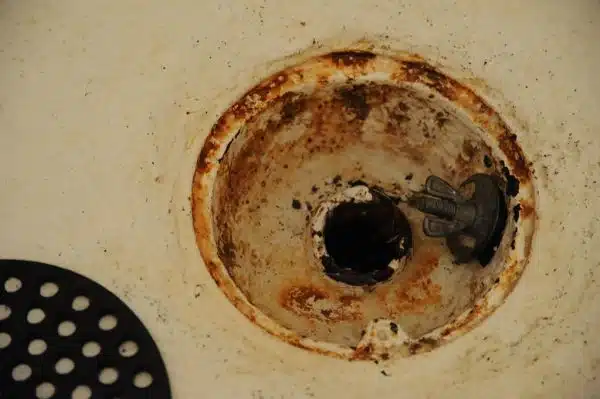

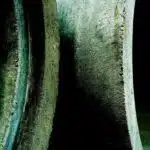


![How To Get Hair Out Of A Bathtub Drain 6 2/365 [Bathtub Drain]](https://green-life.blog/wp-content/uploads/2023/05/cOEu5edpkejq-150x150.jpg.webp)
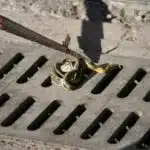
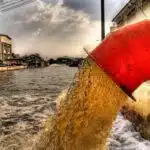
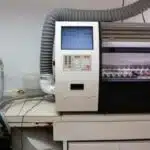


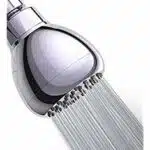
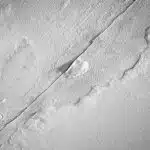


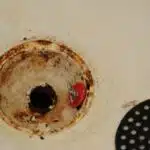

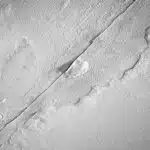
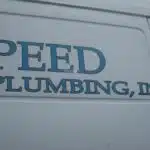

![How To Replace A Bathtub Drain In A Mobile Home 21 2/365 [Bathtub Drain]](https://green-life.blog/wp-content/uploads/2023/05/3ft8KAJsNnjq-150x150.jpg.webp)
